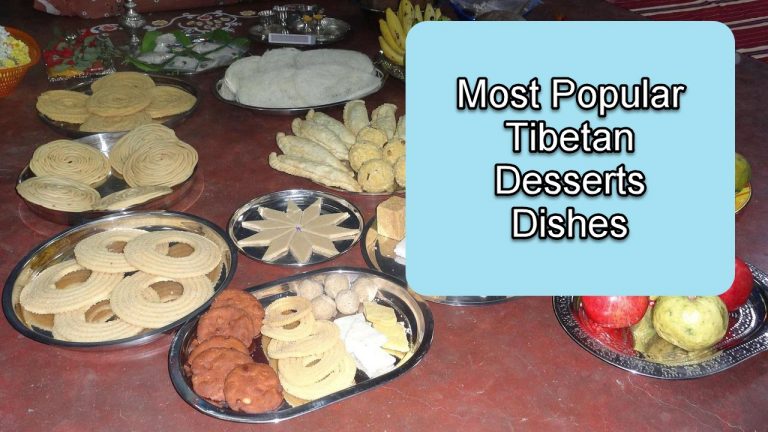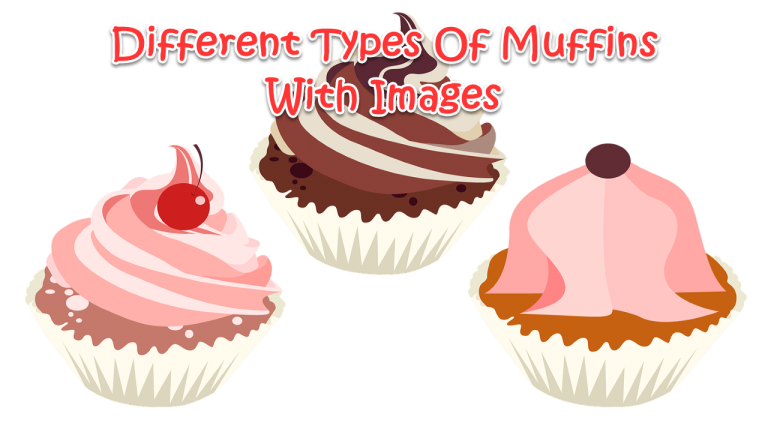8 Most Popular Brunei Desserts Dishes

Bruneian cuisine is influenced by and comparable to the cuisines of Malaysia, Singapore, and Indonesia, with additional influences from India, China, Thailand, and Japan. Fish and rice are staple foods, as they are throughout the region, while meat is more expensive and thus less prevalent. The meal is halal and pork is avoided due to the Islamic religion’s supremacy. Brunei prohibits the consumption of alcoholic beverages. Today, we are going to talk about the most popular Brunei dessert recipes. If you want to learn more about these delicious treats, scroll down and continue reading.
Brunei Desserts Dishes

Mangoes With Sticky Rice
Mango sticky rice is a delicacy in Southeast Asia and South Asia made with glutinous rice, fresh mango, and coconut milk that may be eaten with a spoon or your hands.
Sticky rice desserts are typically sweetened with palm sugar or jaggery, coconut milk, and coconut flakes, wrapped in banana leaf, steamed or stuffed in bamboo, and roasted over an open fire, as in sticky rice in bamboo. Sticky rice (glutinous rice), canned or fresh coconut milk, salt, palm sugar, and mangoes are the major components.
To create this delicious dessert, the rice is soaked in water before being steamed or cooked in a rice cooker. Moreover, the coconut milk is heated without boiling after being blended with salt and sugar. After the rice is done cooking, combine the coconut milk mixture or coconut cream sauce with the rice in an even layer and set aside to enable the milk to absorb into the rice. Mangoes have been peeled and sliced.
To serve the dish, scoop the rice onto a plate, add a few mango slices on top or to the side, and drizzle the remaining coconut milk or coconut cream sauce on top. The sticky rice is sometimes topped with crunchy yellow mung beans.
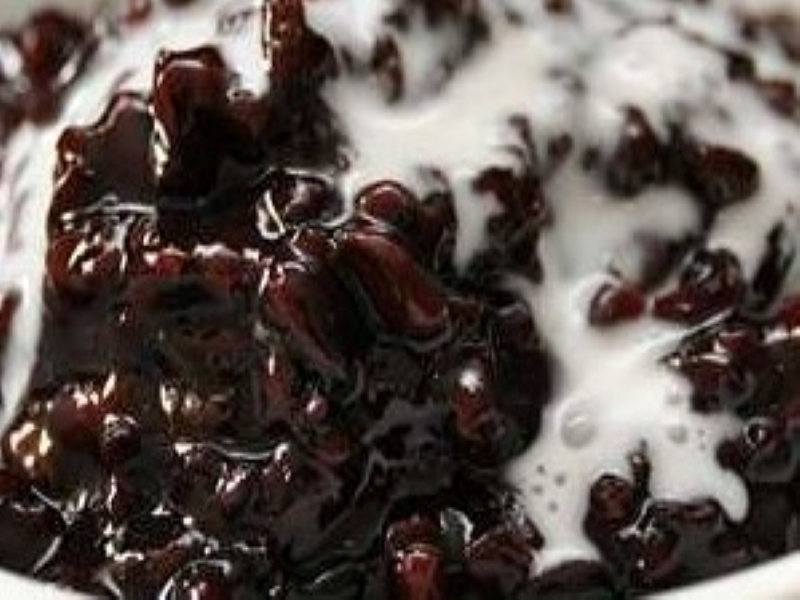
Black Rice Pudding
Black rice pudding is a popular dessert in Brunei. It is made of black glutinous rice, pandan leaves, palm sugar syrup, salt, and thick coconut milk.
Serve chilled with a swirl of freshly squeezed creamy coconut milk on top.

Clorot
Also known as celorot, cerorot, or jelurut. Clorot is a traditional Bruneian and Indonesian sweet food (kue or kuih) made of a sweet and soft rice flour cake with coconut milk, wrapped with janur or young coconut leaf and shaped into a cone. It is a famous sweet snack that is popular in Indonesia, Malaysia, and Brunei.
To prepare this delicious dessert, coconut milk is blended with gula jawa (palm sugar), pandan leaf, salt, and water that has been heated . This sweet liquid is then poured evenly over rice flour and sago or tapioca flour. The janur, or immature coconut leaf, is coiled into a long cone, resembling a little trumpet, which is then positioned upright. The sweet dough is then poured into the coconut leaf cones until they were three-quarters full. The top section is then filled with a coconut milk, rice flour, and salt combination. After that, the filled cones are steamed for around 15 minutes, until the dough within has cooked and set.

Coconut Sweet Potato Cake
The main ingredients of this tasty treat are cassava, and fresh-grated coconut. Other ingredients includes sugar, vanilla, salt, and cake mold. This treat is often serve chilled.
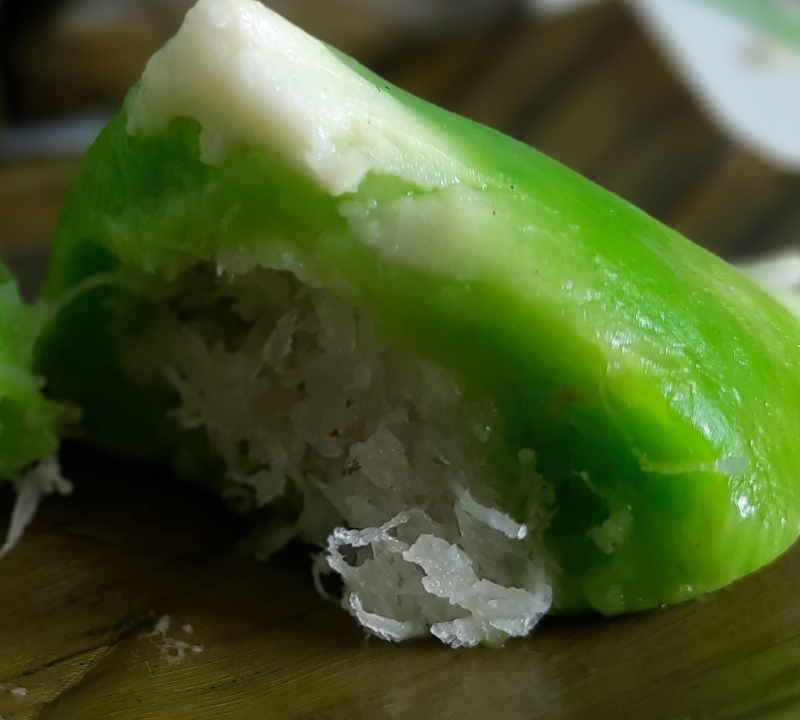
Kue Kochi
Kue Kochi is a Maritime Southeast Asian dumpling (kue or kuih) that is popular in Brunei. It is prepared from sticky rice flour and loaded with coconut fillings and palm sugar.
This food is commonly served as a dessert in Brunei and can be consume at any time, during breakfast or tea time. The unpolished rice’s black color denotes death, while the sweet filling represents resurrection.
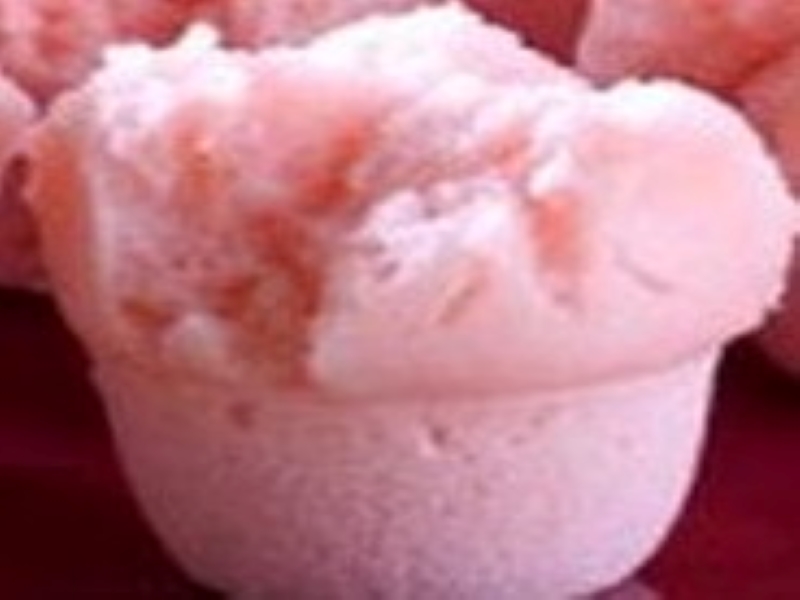
Kue Mangkok
Kue mangkok, also known as kue mangkuk, is a traditional steamed cupcake snack. Kue mangkok literally translates to “bowl/cup cake.”
It is made with a flour, rice flour, and sagoo (tapioca) flour blend, yeast, egg, coconut milk, sugar, and salt dough. Traditional kue mangkok is sometimes sweetened with palm sugar, giving it a brownish hue. Other traditional variants include tape singkong or tapai (fermented cassava), ubi (sweet potato), or talas (sweet potato) (taro). The dough is pressed into muffin tins, stainless steel cupcake tins, or small bowls, then steamed until the tops of the cakes rise, expand, and bloom like a flower. Four petal-like lumps are forming on the top. In comparison to traditional cupcakes, the texture is soft and solid, with a slight moistness. On top of the kue mangkok, grated coconut can be sprinkled.
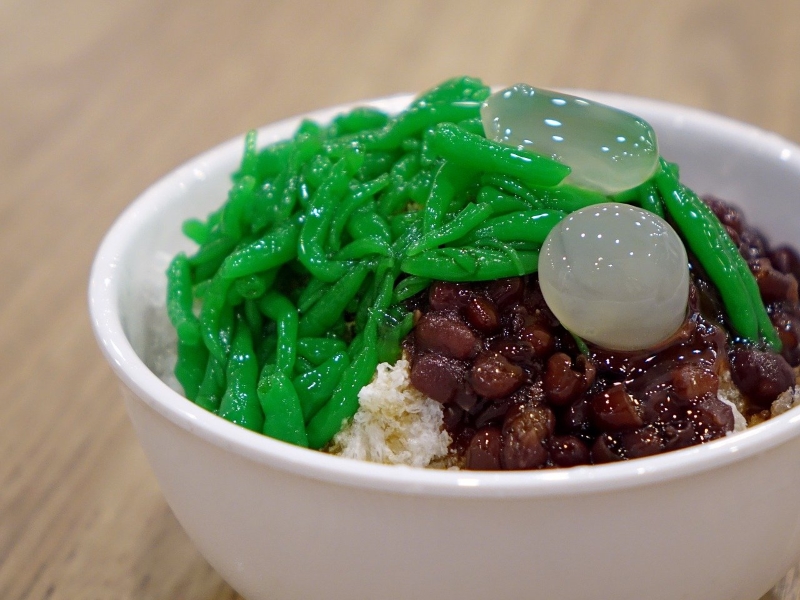
Cendol
Cendol is an iced sweet delicacy made of green rice flour jelly droplets, coconut milk, and palm sugar syrup. It is popular in Brunei and may be found all around Southeast Asia. Additional toppings, such as diced jackfruit, sweetened red azuki beans, or durian, can be placed on top of the green jelly.
Cendol’s ingredients include a number of aren or sugar palm and coconut plants. Coconut milk, jelly noodles made from rice flour with green food coloring (typically sourced from the pandan leaf), shaved ice, and palm sugar are the dessert’s original or basic ingredients. Cendol is typically served in a tall glass with a bottom layer of liquid gula jawa or palm sugar syrup, a layer of green jellies, a layer of coconut milk, and a layer of shaved ice.

Onde-onde
Onde-onde is a sweet rice cake ball snack coated in grated coconut and filled with molten palm sugar. The green-colored glutinous rice balls, which are of Javanese origin, are a popular in Brunei.
Onde-onde is a boiled rice cake filled with liquid palm sugar or gula jawa/merah/melaka, and coated in flaked coconut. The dough is produced of sticky rice flour, occasionally blended with tapioca, and a paste formed from the leaves of the pandan or dracaena plants (daun suji), whose leaves are frequently used in Southeast Asian cooking.
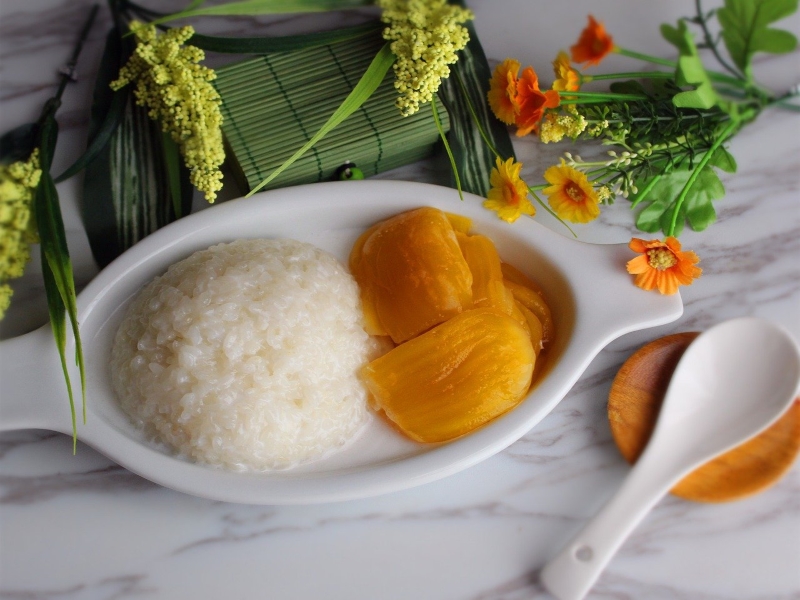
Recipe For Mango Sticky Rice
Ingredients
- Dice or Sliced Mangoes (3 pieces)
- Uncooked short-grain white rice (1 1/2 cups)
- Coconut milk (1 cup)
- Water (2 cups)
- Sugar (1/2 cup)
- Salt (1/2 tsp)
- Sesame seeds
Instructions
- In a bowl, put the rice, fill it with water, and soak overnight.
- Place the rice into a strainer in the morning and drain all of the water. Fill a bowl halfway with water and run it over the rice until the water runs clear.
- In a medium pot, combine the soaked rice and 2 cups water. Bring the water to a boil, then cover and reduce to a low heat. Cover the saucepan with the lid for 20 minutes. Turn off the heat, remove the lid, and fluff the rice with a fork when it’s done.
- Make the coconut milk mixture when the rice has around 5-10 minutes remaining to cook. In a small pot, whisk together the coconut milk, sugar, and salt. Bring to a boil while constantly stirring. Let it boil for 2-3 minutes, or until the sugar is completely dissolved.
- In a mixing bowl, mix the rice and coconut milk. Cover one more and set aside for ten minutes. This will give the rice enough time to absorb any surplus moisture. This must be done while the rice is still hot.
- Use a measuring cup to serve. Turn the rice over onto the plate after forming it into the cup. Mango strips or cubes should be used to line the platter. Sesame seeds can be sprinkled on top.
